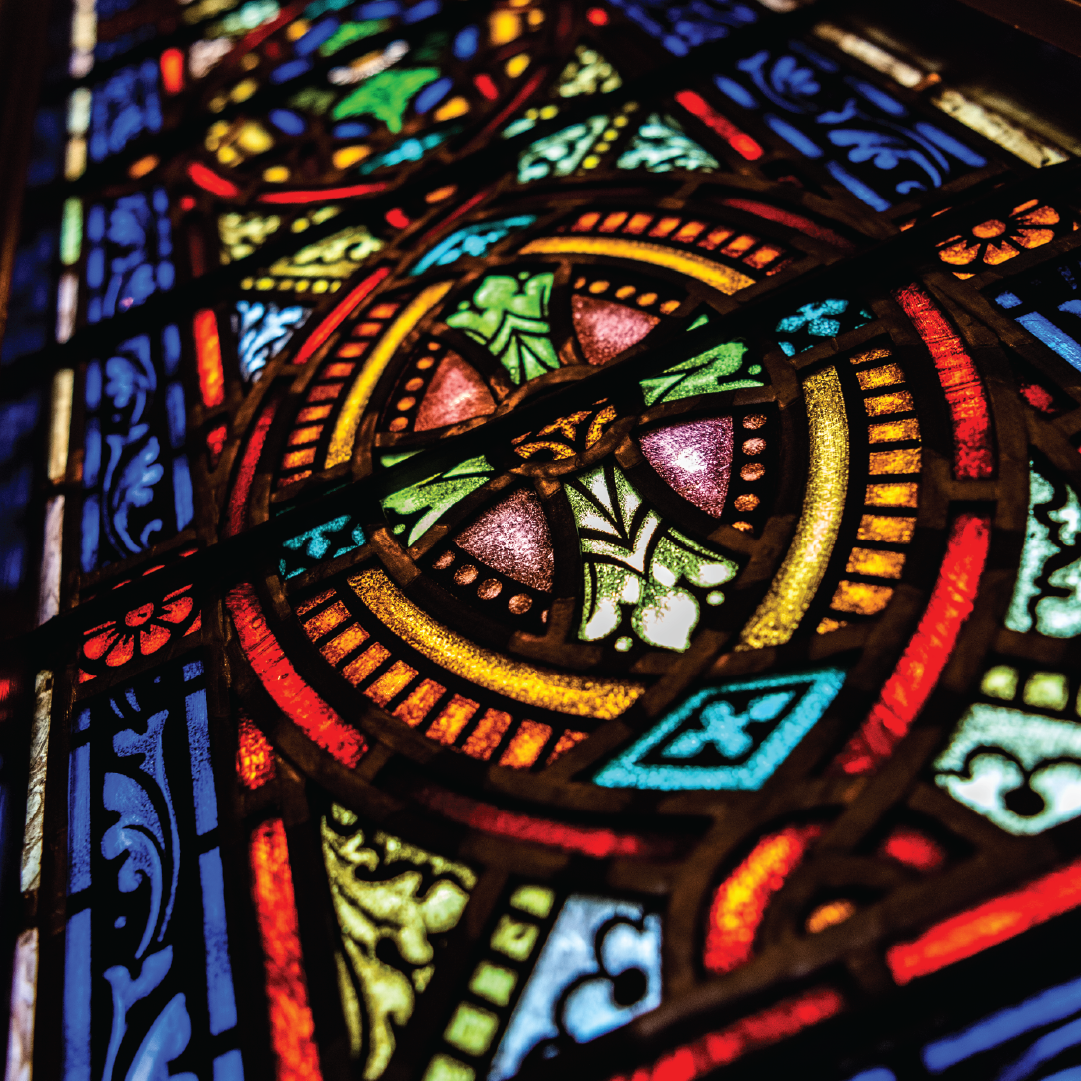By Lynn Hamby, daughter of Liz Wilson
 Liz Wilson discovered her calling and her career as a designer of church needlepoint quite by accident. Having studied art at Southern Methodist University, the Art Institute of Chicago, and through numerous classes and workshops taught by talented artists, Liz well knew how to draw, paint, and use color and texture to create beautiful designs.
Liz Wilson discovered her calling and her career as a designer of church needlepoint quite by accident. Having studied art at Southern Methodist University, the Art Institute of Chicago, and through numerous classes and workshops taught by talented artists, Liz well knew how to draw, paint, and use color and texture to create beautiful designs.
Liz was living with her family on the North Shore of Chicago during the early 70's, an era when the needle arts reached an ascendancy of popularity among women looking for ways to decorate their homes and create lasting gifts for loved ones. Liz joined a needlepoint group led by the expert British needle woman, Edna Casserley. Edna was living on the North Shore with her husband, an Anglican priest serving an Episcopal church in the area.
As these women met together to improve their skills in working with imported wool thread and scrim, the intricate canvas used as the basis for all needlepoint, one or another would mention, "I wish I could create a needlepoint design especially for my living room", or "I wish I could give my little granddaughter a special Christmas stocking created just for her." Liz, the artist, immediately responded, "I could draw that design for you!" And she did create many marvelous designs for friends and family members. Liz named her needlepoint design business "Studio in the Woods" because of the lovely wooded terrain of Hubbard Woods where she lived.
Edna observed Liz's individual design business develop, but she had another idea as a direction for Liz's artistic talent. Having strong connections to the Episcopal church as well as the broader church community, Edna learned that the Trinity Church of the North Shore, a Methodist Church in Wilmette, Illinois, was looking for someone to design custom pieces for their sanctuary. Liz got her first job as church needlepoint designer!
Soon an even larger opportunity was presented to Liz. Saint Mark's Episcopal Church of Evanston was considering a major needlepoint design project for their sanctuary and their chapel known as the Lady Chapel. After meeting with the Rector and church leadership, Liz was selected to be the designer and began a project that ultimately resulted in thirty-one pieces of needle art, including kneelers, stall cushions, clergy chairs and kneelers, wedding kneelers, chair seats, and a large altar rug eleven feet in length.
To create her designs, Liz studied and utilized many of the decorative themes already in use in the sanctuary in stained glass windows, wood carvings, and metal railings. She was particularly sensitive to the many ancient symbols that would resonate with meaning for that particular church community, including the Lamb representing Christ, the Descending Dove emblematic of the Holy Spirit, and the Lion, the symbol associated with Mark the Evangelist. In the Lady's Chapel, Liz selected the Garden Enclosed, the Rose, and the Lily as symbols associated with Mary.
She created sketches of her concepts and collaborated with the church leaders on the final designs. She then created more formal color renditions to get a final approval before she actually painted the designs onto the scrim canvas.
Once the canvases were ready, Liz selected the wool threads in the appropriate colors which would be- applied by needle- workers using the tent stitch, an ancient stitch known for its precision and sturdin_ess as it covered the canvas scrim on both sides. Many church members volunteered to work on the great project, some of whom had never needle pointed in their lives! Liz taught these ladies how to perform the neeessary stitch and worked constantly with the group to oversee the entire process. Later, many members of the group would comment that the creative work for the church they loved, as well as the community experienced whi1e working together, was a real joy!
When the canvases were completely worked, each one was carefully upholstered by a master craftsman to assure that it would last for decades. The last step in the project was a particularly meaningful one for Liz: all of the needlepoint creations were presented at the altar of the sanctuary for a dedication before the congregation. Actually, as the project was so large, three dedications were held. In each case, the person who worked a particular kneeler or seat cushion or aportion of the altar rug carried it in a procession down the aisle and placed it before the altar. The needlepoint work was dedicated to the glory of God and for the joy of the congregation.
How did her work take off? Stay tuned for part 2!





